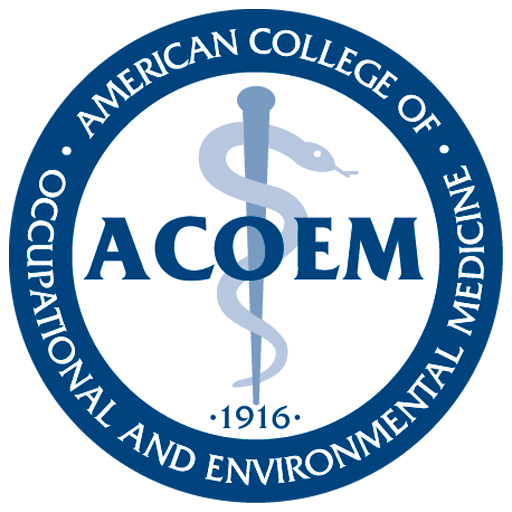
03: Medical Survellience
A respiratory protection program is required in many types of industries, including chemical, health care, construction, and manufacturing. Its main purpose is to prevent workers’ exposure to airborne hazardous contaminants (such as infectious agents, fumes, gases, and particles) that may lead to occupational illnesses, including asthma, pneumonitis, silicosis, tuberculosis, and lung cancer.
The federal Occupational Safety and Health Administration (OSHA) and OSHA-approved state plans require employers to provide a workplace free of recognized hazards. Most state plans have adopted federal OSHA regulations and standards, but some states, including California, Michigan, Oregon, and Washington, have standards that are even more stringent.
OSHA Respiratory Regulations
OSHA 1910.134 subpart I Personal Protective Equipment (PPE) requires employers to mandate the use of respirators to protect workers from airborne hazards. Employers that fail to comply with minimum OSHA standards are subject to state or federal OSHA citations. Employers are required to have written respiratory protection programs that include:
- designating a program administrator (typically the safety officer)
- performing worksite risk assessments to determine the correct selection of respirators
- providing training on the use and storage of PPE
- providing National Institute for Occupational Safety and Health (NIOSH)–certified respirators when their use is mandatory
- providing information to the physician or other licensed health care professional (PLHCP) about the type of respirator, duration of use, physical effort needed, temperature, and any additional PPE requirements
- providing medical evaluations free of charge—during work hours and at convenient times, by a PLHCP—to workers before they begin using a respirator, and giving employees an opportunity to discuss the questionnaire and examination results with the PLHCP
- arranging for additional medical evaluation if a worker develops symptoms with respirator use or if there is a change in workplace conditions or employee health.
Management and Follow Up
Medical Examination
Before mandating respirator use at work, employers must provide medical evaluations to their workers to determine whether they can safely tolerate the physical burdens associated with using respirators. Those burdens include cardiovascular stress, increased body temperature, discomfort, and altered visibility and mobility. OSHA requires that the evaluation:
- Be performed by a physician or other PLHCP knowledgeable of the physiological demands of a respirator Nurses may provide the evaluation in accordance with nursing board standards.
- Include at a minimum the OSHA medical questionnaire (Appendix C of the OSHA standard) or another medical examination with the same information or as permitted by the Oneexample is the California aerosol transmissible disease questionnaire used for health care workers. Further medical evaluation is required if a worker answers “yes” to any question from 1 through 8 on Appendix C, Part A Section 2.
- Leads to the PLHCP providing the employer a medical clearance letter—free of any medical information—stating only whether the worker is:
- medically cleared to use a respirator—and the appropriate type
- cleared to use only certain types of respirators
- cleared with restrictions (for example, the sole use of a powered air-purifying respirator for a worker who is unable to tolerate a negative-pressure or tight-fit respirator)
- deferred pending further evaluation.
The PLHCP should also indicate when the next medical evaluation should take place.
During the medical evaluation, the evaluator should take into consideration any medical conditions that would affect the worker’s ability to wear a respirator, including diabetes, hypertension, facial features, cardiopulmonary diseases (CAD, COPE, asthma, or emphysema), skin conditions, claustrophobia, age, or heat intolerance.
Self-contained breathing apparatus (SCBA) respirators are used under extreme work conditions (rescue, lethal hazardous air levels) and carry a high physical burden. Although not OSHA mandated, employers should conduct physical examinations and spirometry testing as part of SCBA medical evaluations.
Periodic Medical Evaluation
OSHA does not require routine annual medical examinations unless specific trigger events occur, such as:
- The employee reports signs or symptoms related to the ability to wear a
- The health care provider or employer determines an examination is necessary for any
- A change in the workplace substantially increases the physiological burden on the
- There is a change in the worker’s ability to use
Health care providers typically recommend a time frame for follow-up. Research by the American College of Occupational and Environmental Medicine, American National Standards Institute, and NIOSH supports periodic health evaluations based on employee age and respirator type. The Navy’s protocol (abbreviated as OPNAV) includes a periodic respirator medical evaluation every five years for those under 35, every two years for those ages 35 to 44, and annually for those 45 and over or using the SCBA. Employers often opt to conduct periodic medical evaluations to avoid citations that may occur if a trigger event is missed. Employers in the petrochemical industry routinely choose to reevaluate employees on an annual basis.
Implementation of Processes and Procedures
Respirators either filter or supply alternative air sources, thus reducing or eliminating exposure to airborne hazards. The two main types of respirators are:
- air purifying, removing air contaminants. Examples include the N95 and half and full-face
- air supplying, such as the SCBA, providing alternate sources of clean air.
Respirators must be NIOSH certified and have an assigned protection factor (APF)—that is, the level of respiratory protection expected under ideal conditions. For example, an N95 respirator rated APF=10 will reduce the concentration of the contaminant to one-tenth. Employers must select respirators based on the specific airborne hazards related to the duties at hand. Many hazards are OSHA regulated according to the permissible exposure limit.
Surgical masks are not respirators but fluid barriers and thus do not provide the same protection as the N95 respirator, which provides protection against aerosol-transmissible diseases like tuberculosis and influenza.
Respirator Fit Testing
OSHA mandates fit testing, after the worker is medically cleared by a PLHCP, to confirm an adequate seal for all tight-fitting respirators (such as the N95, half face, or full face) before the start of use and on an annual basis. The worker must be allowed to choose the respirator from a sufficient number of models and sizes. The fit tester does not need to be licensed or certified but should be trained to follow OSHA 1910.134, Appendix A.
There are two types of fit testing:
- Qualitative: This pass/fail test, the most commonly performed for which there is a readily available testing kit, is used for negative-pressure and air-purifying respirators. The challenge agent usually is either saccharine or Bitrex™.
- Quantitative: This test can be used for any type of tight-fitting respirator but is required for those with APF of 50 or above and SCBA (according to the National Fire Protection Association).
Common respirator types, APF, uses, and fit testing requirements:
| Respirator Type | APF | Use | Need for fit testing | Type of fit testing |
| Filter face piece: N95 | 10 | Respiratory infection control of aerosol- transmissible diseases | Yes | Qual or quant |
| Half face | 10 | For grinding, handling certain chemicals, welding. | Yes | Qual or quant |
| Full face | 50 | Similar to half face but five times the protection; protects eyes and covers most of the face | Yes | Quant if APF > 50 |
| Powered air purifying | 25 | For health care settings (high-exposure aerosol-transmissible diseases, or when facial hair or deformities preclude use of N95) | No | NA |
| Air supplied, self-contained breathing apparatus | 1000 | Firefighters, rescue, or “immediate danger to life or health” conditions | Yes | Quant |
Resources
Online
OSHA Hospital Respiratory Protection Program Toolkit
Joint Commission Implementing Hospital Respiratory Protection Programs: Strategies from the Field
U.S.Navy Medical Respirator Medical Evaluation Printed Guides
Guide to the Medical Evaluation for Respirator Use by Robert K. McLellan, MD, MPH, and Kathleen M. Schusler, MSN, COHN-S (OEM Press)
Current Occupational and Environmental Medicine, Fifth Edition, by Joseph LaDou, MS MD, and Robert Harrison, MD MPH, (OEM Press)
